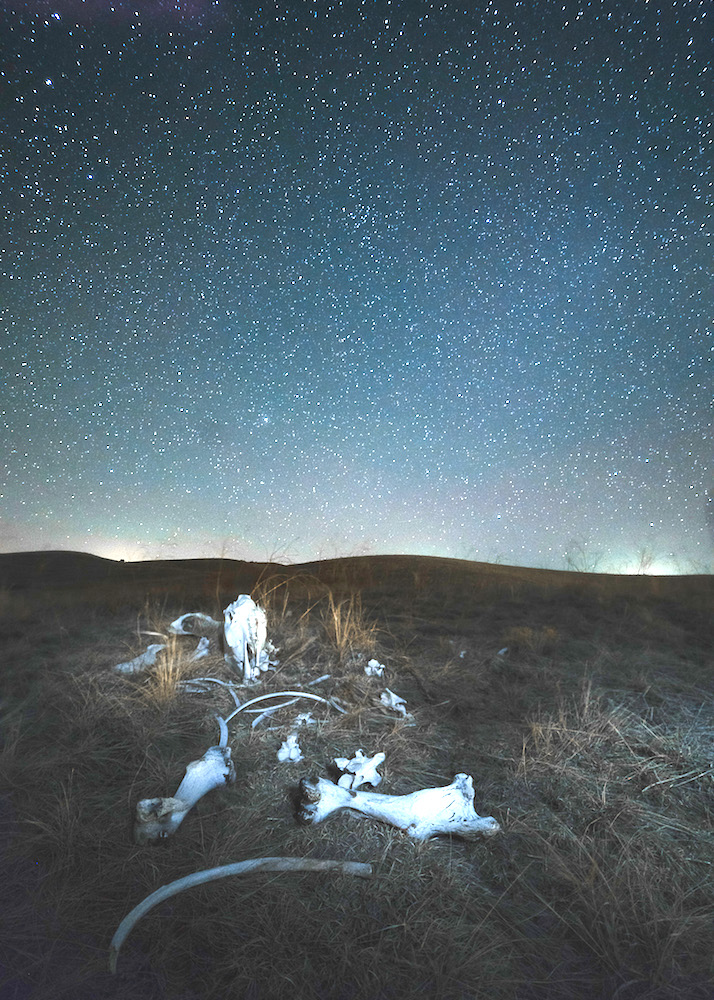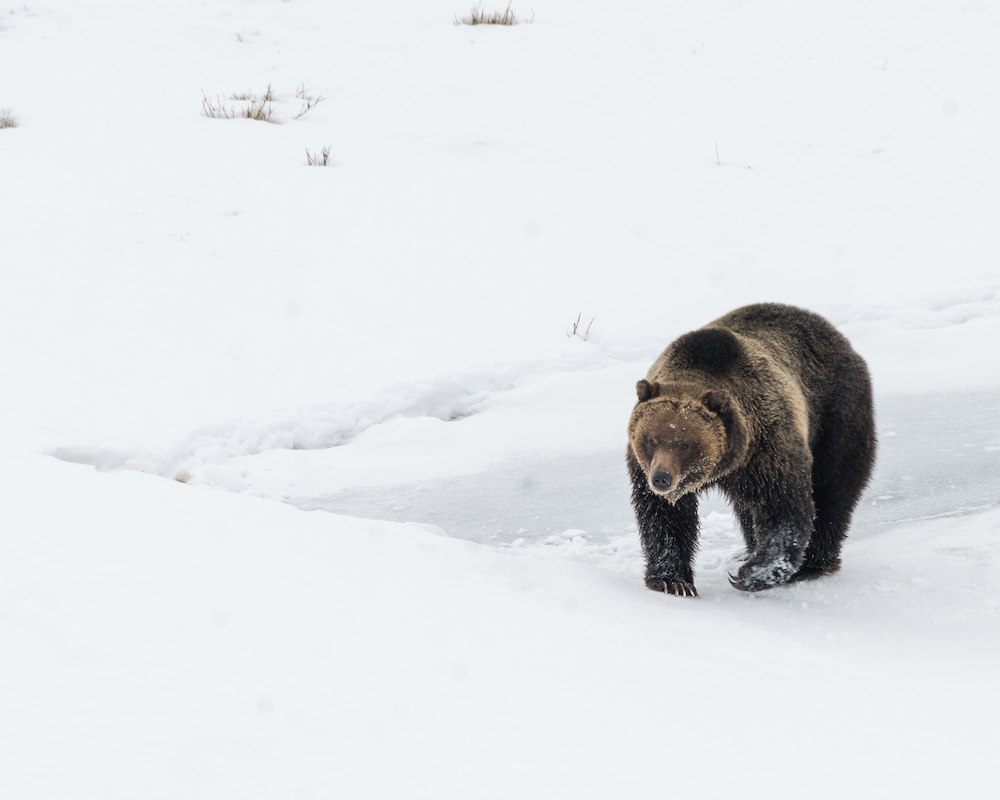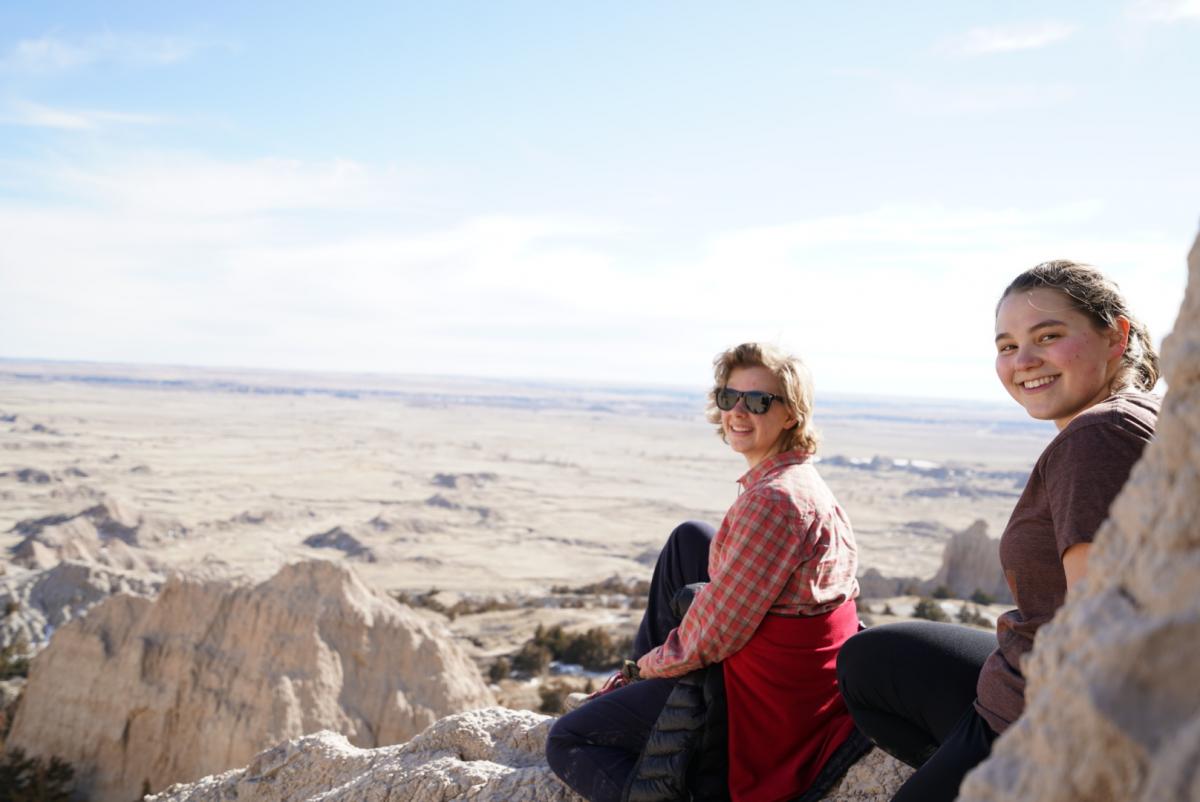Finding Something Bigger in Yellowstone

Spring Breaks are too precious to spend sitting on a beach or catching up on streaming videos. In March, 12 Marlboro students joined Adam Katrick ’07 MSM ’16 and science lab coordinator Allison Turner MA ’99 on an epic two-week road trip to Yellowstone National Park. For all of the participants, it was not only an opportunity to see some outstanding landscapes, diverse environments, and spectacular wildlife, it was a chance to reflect on things larger than themselves.
“These landscapes demand our attention and respect, and teach us to slow down, watch, listen, and learn,” says Adam, who was hired as Outdoor Program (OP) director in April and served as interim director before that. “Hiking in the Rockies in winter forces you to focus on your survival and the well-being of your team. There’s little room to worry about anything else. And in a world where a thousand things are constantly demanded of us from technology and social media, that open and focused space is an invitation to connect to ecosystems much larger than us. It’s slow time, and it’s meditative. I think it’s crucial that we all have that reflective space.”
“It is important for students to do these trips because it lets them see a new part of the world and learn new things,” says junior Sam Harrison. “Coming from rural Vermont, I had a narrow view of what the rest of the country looked like. Thanks to this trip, I got to see so many different landscapes and learn about all of the animals in Yellowstone. Doing trips through the OP also lets students learn to work in a group, where everyone is their own leader and everyone takes care of each other.”
The group spent most of their time based in Gardiner, Montana, just outside Yellowstone, with renowned ecologist, author, and tracker Jim Halfpenny. Their trip also included a stop on the way out at Pine Ridge Reservation, South Dakota, and a stop at the Big Creek Ranger Cabin in Gallatin National Forest, Montana, on the way back. Along the way they got to experience the Badlands of South Dakota, climb through Rocky Mountain forests, and commune with more wildlife than they could’ve imagined, including bald eagles, pine martens, wolves, foxes, coyotes, elk, pronghorn antelope, and, yes, grizzly bears.

“Getting to see a part of the world and environments that are unfamiliar can be a really valuable experience,” says junior Lydia Nuhfer. “I study ecology at Marlboro, so seeing ecosystems that are so different from the ones I know was truly amazing. The environmental work that the Pine Ridge community is doing, the diversity of species and landscapes along the way, and the interactions with wildlife ecologists that I was able to experience absolutely tie into my studies.”
Like other OP expeditions through the years, the Yellowstone trip gave students the opportunity to engage with people they might not otherwise, like the Oglala Sioux community of the Pine Ridge Reservation or wildlife photographer Dan Hartman. It also provided many opportunities for leadership development—from planning menus to leading hikes or other activities— building skills and confidence that that will help students be more effective leaders for Bridges orientation trips, or in their future workplaces.
“The highlight of my trip was definitely staying in a Forest Service cabin in Gallatin National Forest on our way home,” says junior Claire O’Pray. “One of the days we were there four of us bush-whacked up the mountain that was behind the cabin. Mountains are my favorite thing in the world, and being confident enough to hike a mountain without a trail was really amazing. We also made split pea soup from scratch on a wood cookstove.”

“These expedition trips have so many experiences rolled into two intense weeks, that we rely on the participants’ individual skills, talents, and unique leadership styles to make it through each day,” says Adam. “We learn a lot about each other, have plentiful opportunities to share our skills with one another, and concurrently, grow and learn.” But for many of the participants, the highlight of the trip was seeing a male grizzly bear lumbering toward Blacktail Pond, at the northern end of the park. It was their last full day in the park, and they had not seen one yet—in fact they had been told it was extremely unlikely, even in Yellowstone—and there they were, 200 feet away and watching this huge bear break through the ice to find his next meal.
“That was pretty breathtaking, and so was simultaneously watching the look on Della’s face,” says Adam, referring to sophomore Della Dolcino. “She really wanted to see a bear, and was just in awe with tears of joy. To watch someone connect so profoundly to that bear, and that landscape…it was an amazing moment. We saw so much wildlife, but seeing that bear really just made us drop everything we were doing so we could set up our scopes and watch. All we could do was stand there and smile and shake our heads. It was spectacular.”
Adam asserts, and the students who joined him and Allison would surely concur, that the hands-on, experiential learning that takes place on OP trips like this one to Yellowstone is an essential counterpart to classroom work. He says, “When these trips are in their element, whether the Rocky Mountains or the Green Mountains, they provide the perfect environment for ‘aha’ moments and fuel for better learning.”
